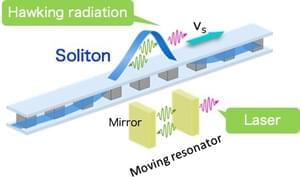Researchers propose quantum circuit black hole lasers to explore Hawking radiation.
Given the tricks GPT-3 had up its sleeve, it’s intriguing to wonder how the Megatron-Turing model may surprise us given that it’s three times larger.


😃
Microsoft’s blog post on Megatron-Turing says the algorithm is skilled at tasks like completion prediction, reading comprehension, commonsense reasoning, natural language inferences, and word sense disambiguation. But stay tuned—there will likely be more skills added to that list once the model starts being widely utilized.
GPT-3 turned out to have capabilities beyond what its creators anticipated, like writing code, doing math, translating between languages, and autocompleting images (oh, and writing a short film with a twist ending). This led some to speculate that GPT-3 might be the gateway to artificial general intelligence. But the algorithm’s variety of talents, while unexpected, still fell within the language domain (including programming languages), so that’s a bit of a stretch.
However, given the tricks GPT-3 had up its sleeve based on its 175 billion parameters, it’s intriguing to wonder what the Megatron-Turing model may surprise us with at 530 billion. The algorithm likely won’t be commercially available for some time, so it’ll be a while before we find out.


Scientists are getting closer to being able to spot Hawking radiation – that elusive thermal radiation thought to be produced by a black hole’s event horizon. Just understanding the concept of this radiation is tricky though, let alone finding it.
A new proposal suggests creating a special kind of quantum circuit to act as a ‘black hole laser’, essentially simulating some of the properties of a black hole. As with previous studies, the idea is that experts can observe and study Hawking radiation without actually having to look at any real black holes.
The basic principle is relatively straightforward. Black holes are objects that warp spacetime so much, not even a wave of light can escape. Swap spacetime for some other material (such as water) and make it flow quickly enough so that waves passing through are too slow to escape, and you’ve got yourself a fairly rudimentary model.




Artificial intelligence (AI) is increasingly becoming a tool for researchers in other science and technology fields, forging collaborations across disciplines. Stanford University in California, which produces an index that tracks AI-related data, finds in its 2021 report that the number of AI journal publications grew by 34.5% from 2019 to 2020; up from 19.6% between 2018 and 2019 (see go.nature.com/3mdt2yq). AI publications represented 3.8% of all peer-reviewed scientific publications worldwide in 2,019 up from 1.3% in 2011.
Five AI researchers describe the fruits of these collaborations, beyond journal publications, and talk about how they are helping to break down barriers between disciplines. across disciplines are growing, and artificial intelligence is helping to make joint working more effective.

According to the report, the global AI market will be worth US$284.4 billion by 2026.
Today, the artificial intelligence platform has become a way for computer systems to perform tasks like human intelligence including decision-making and speech recognition. Globally, problem-solving, social intelligence, and general intelligence are being achieved with the help of the artificial intelligence platform. Moreover, rising high-level computer languages are helping various industries to work efficiently on the artificial intelligence platform.
Full Story:

AI startups can rake in investment by hiding how their systems are powered by humans. But such secrecy can be exploitative.
The nifty app CamFind has come a long way with its artificial intelligence. It uses image recognition to identify an object when you point your smartphone camera at it. But back in 2015 its algorithms were less advanced: The app mostly used contract workers in the Philippines to quickly type what they saw through a user’s phone camera, CamFind’s co-founder confirmed to me recently. You wouldn’t have guessed that from a press release it put out that year which touted industry-leading “deep learning technology,” but didn’t mention any human labelers.
The practice of hiding human input in AI systems still remains an open secret among those who work in machine learning and AI. A 2019 analysis of tech startups in Europe by London-based MMC Ventures even found that 40% of purported AI startups showed no evidence of actually using artificial intelligence in their products.